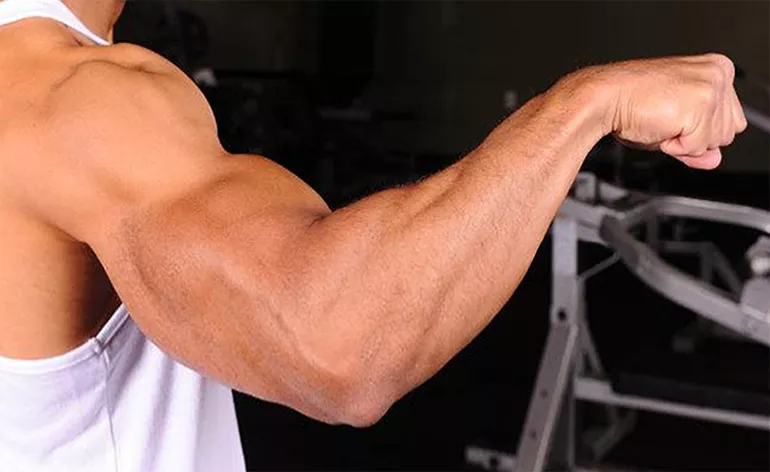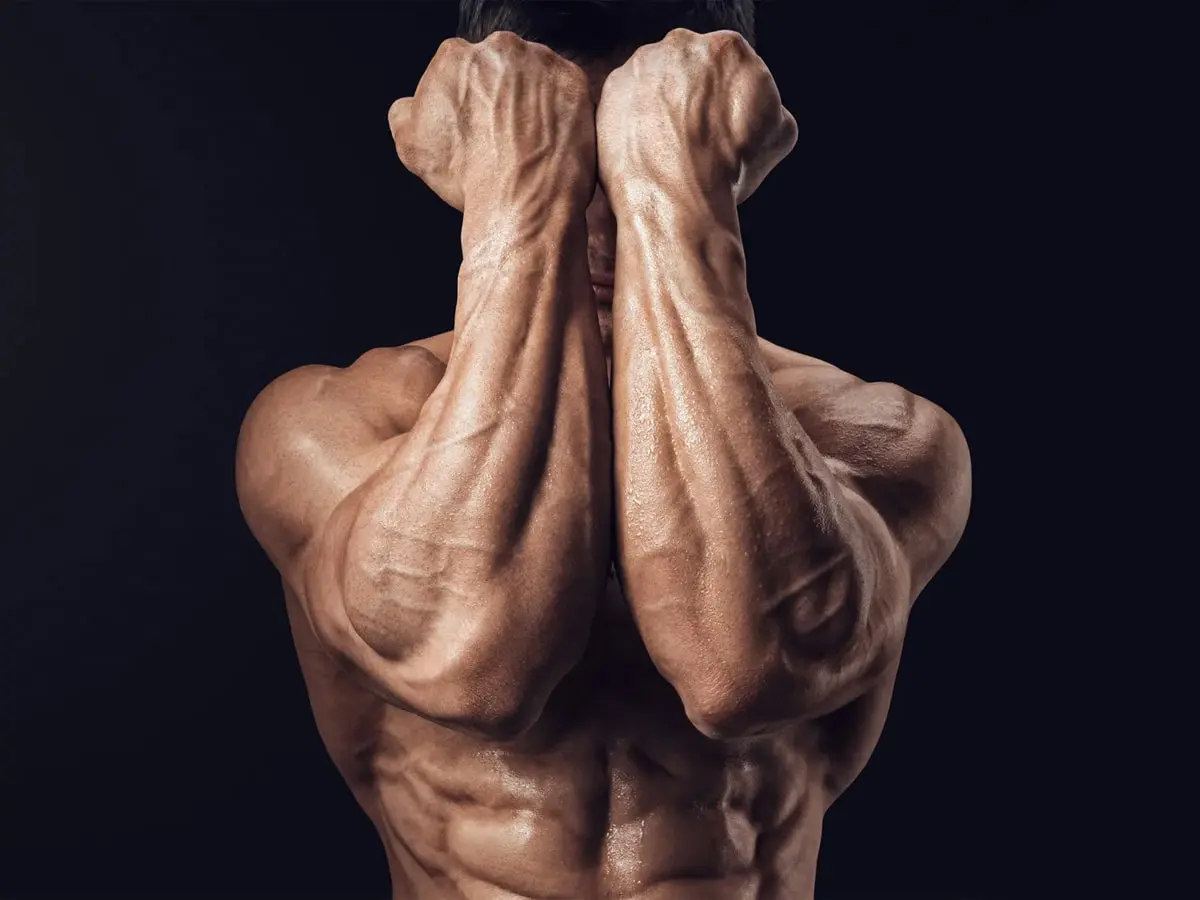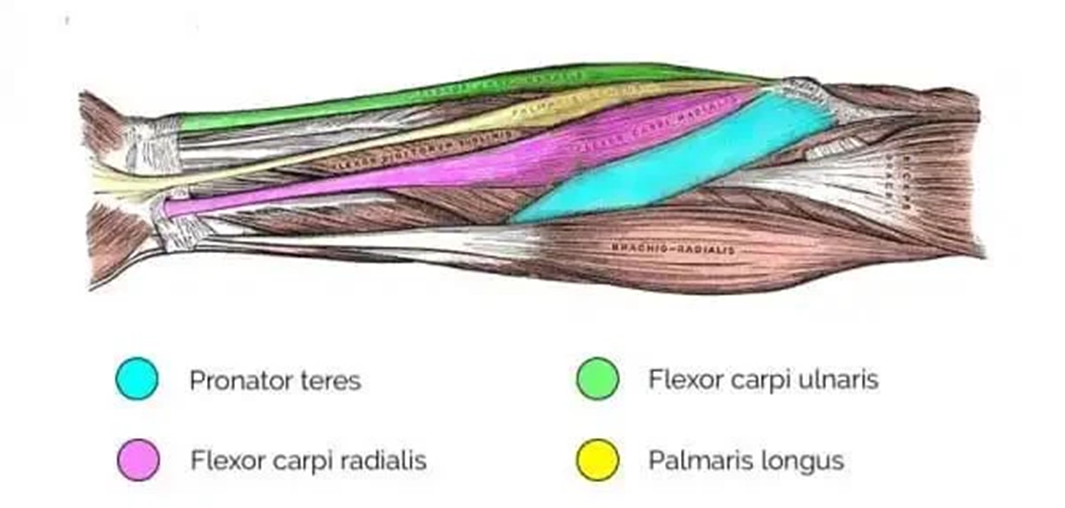How to Train Forearms for Bigger Arms and Stronger Lifts
In bodybuilding, big arms are a hallmark of a well-developed physique. But here’s the truth: most guys train biceps and triceps religiously while completely neglecting their forearms — the very muscles that connect your grip to the bar, stabilize your wrists, and complete the look of thick, powerful arms.
Whether your goal is to improve pulling strength, enhance your grip, or just fill out your sleeves, forearm training isn’t optional — it’s essential.
We break down why forearms matter, what types of training you need, and how to program forearm workouts that build both size and function.
Why Forearm Training Matters More Than You Think
If you’ve ever had your grip give out before your back did on a set of deadlifts, you already understand the importance of strong forearms. But their value goes beyond grip.
Here’s why every lifter — beginner to advanced — should prioritize forearm training:
- ✅ Supports Big Lifts: Your deadlifts, rows, shrugs, curls, and pull-ups are only as strong as your grip.
- ✅ Builds Complete Arms: The forearms contribute major visual thickness to your lower arms and complete the overall look.
- ✅ Improves Grip Endurance: Stronger forearms mean less fatigue when lifting, climbing, or carrying.
- ✅ Prevents Injury: Balanced development reduces strain on the wrists, elbows, and shoulders.
In short: you can’t move big weight if you can’t hold it. And you can’t build massive arms with skinny forearms.
The 4 Types of Forearm Training You Need
Building forearms isn’t just about wrist curls. To get real results, you need to train the different functions of the forearm muscles — from dynamic curls to isometric holds.
Let’s break down the four key categories of forearm training every lifter should include:
🔹 1. Grip Strength Movements
These exercises train your crushing power, holding capacity, and static grip. They involve the fingers, hand, and wrist stabilizers — and they’re essential for improving carryover to compound lifts.
Best Exercises:
- Farmer’s Carry – Walk holding heavy dumbbells or kettlebells. Aim for 30–40 seconds per round. Builds grip and traps.
- Plate Pinch Holds – Grab two plates smooth side out and hold. Great for finger strength.
- Towel or Fat Grip Pulls – Use towels or Fat Gripz during rows, curls, or pull-ups to increase demand on the forearms.
💡 Bodybuilder’s Tip: Treat carries like a lift, not cardio. Go heavy, keep posture tall, and aim for progressive overload by adding time or load weekly.
🔹 2. Wrist Flexion & Extension Movements
These target the wrist flexors (inner forearm) and wrist extensors (outer forearm) — key muscles that give the arm depth and control.
Best Exercises:
- Wrist Curls (Barbell or Dumbbell) – Sit on a bench and let the wrists hang off your knees. Roll the bar up with the palms facing up.
- Reverse Wrist Curls – Same setup, palms facing down. Targets the extensors.
- Wrist Roller – A classic tool. Roll a weight up and down using wrist rotation, both directions.
💡 Bodybuilder’s Tip: Use lighter weights and higher reps (15–20) for these. Maintain a slow, strict tempo to maximize time under tension.
🔹 3. Isometric Holds
Forearms respond well to isometric loading — holding a weight statically for time. This builds grip endurance and mental toughness while heavily recruiting stabilizers.
Best Exercises:
- Dead Hangs – Hang from a pull-up bar for time. Start at 20–30 seconds, work up to over a minute.
- Static Dumbbell Holds – Hold heavy dumbbells at your sides. Focus on posture and hand tension.
- Gripper Squeezes – Use hand grippers like Captains of Crush. Do timed holds or high-rep sets.
💡 Bodybuilder’s Tip: Use isometrics at the end of your workout as burnout finishers. They’re brutally effective for hypertrophy and endurance.
🔹 4. Forearm-Specific Curl Variations
These curls hit the brachioradialis and other forearm flexors, bridging the gap between the upper and lower arm. When trained properly, they give your arms that thick, dense look from the side.
Best Exercises:
- Reverse Curls (EZ Bar or Dumbbell) – Palms-down grip forces forearm activation.
- Hammer Curls – Neutral grip curls that target the brachioradialis and add outer forearm thickness.
- Zottman Curls – Combine supinated up-phase with a pronated down-phase. Great for hitting both the biceps and forearms.
💡 Bodybuilder’s Tip: Keep reps controlled and elbows tucked. Use moderate weight and slow eccentrics to avoid cheating with momentum.
Weekly Programming Strategy
Now that you know what to train, here’s how to program forearms effectively into your weekly split.
✅ Option A: Add Forearms to Arm or Pull Days
- Choose 2–3 movements and tack them on to the end of your workout.
- Volume: 3–4 sets per exercise
- Reps: 10–15 reps, or 20–40 seconds per set for holds
- Frequency: 2–3x per week
This is perfect if you’re already training arms or back and want to sneak in direct forearm work.
✅ Option B: Standalone Forearm Finisher
For serious forearm development, dedicate 1–2 days per week to a short but intense finisher. You’ll hit flexion, extension, and grip all in one circuit.
Sample Superset Finisher:
- Wrist Curl + Reverse Wrist Curl – 3 supersets of 15 reps each
- Hammer Curl – 3 sets of 10
- Farmer’s Carry – 3 rounds, 30–40 seconds
- Plate Pinch Hold – 2 sets to failure
💡 Pro Tip: Use drop sets or time-based challenges (e.g., 60 seconds unbroken hold) to increase intensity without needing heavy loads.
Example Forearm Workout for Size and Strength
This is a complete standalone workout that can be added to the end of a pull or upper body day. It combines strength, volume, and isometric work.
Forearm Attack Workout (30 Minutes Max):
- Reverse Curl (EZ Bar) – 3 sets x 10 reps
- Seated Wrist Curl (DB) – 3 sets x 15 reps
- Reverse Wrist Curl – 3 sets x 15 reps
- Farmer’s Carry – 3 rounds x 30–40 seconds
- Plate Pinch Hold – 2 sets x max time
Rest 45–60 seconds between sets.
Pro Tips for Better Results
These strategies will take your forearm training from average to elite:
- Focus on Tempo: Don’t rush. Use a 2–3 second eccentric phase to increase time under tension.
- No Straps on Arm/Back Days: Ditch the lifting straps unless you’re maxing out. Let your forearms work.
- Track Progress: Log your weight, time held, and reps like any other muscle group.
- Stretch and Recover: Forearms are prone to overuse. Stretch the wrists and forearms post-training to prevent tightness and tendonitis.
- Train Frequently: Forearms recover quickly. Hit them 2–3 times per week for best results.
Anatomy Quick Guide (For Smart Training)
Want to train like a bodybuilder? Learn the muscles you’re working:
- Brachioradialis: Thick outer forearm — trained with neutral/hammer grip curls
- Wrist Flexors: Inner forearm — trained with wrist curls and gripping
- Wrist Extensors: Top outer forearm — trained with reverse curls and wrist extension
Training each of these directly ensures balanced growth, improved grip strength, and elbow joint health.
Final Word: Big Arms Start at the Forearm
If you want bigger arms and stronger lifts, you need to train your forearms like you mean it.
It’s not just about grip — it’s about building strength, control, and complete aesthetics. Your forearms are the link between your hands and your power. When they’re weak, everything from your rows to your curls to your deadlifts suffers.
But when they’re strong? Everything improves.
So train your forearms like a bodybuilder. Like a powerlifter. Like someone who doesn’t settle for half-developed arms.
Because strong forearms don’t just look good — they unlock performance.
🔗 Related Articles:
- Best Forearm Exercises for Size and Strength
- Forearm Anatomy Explained
- Forearm Burnout Workout
- Dumbbell-Only Forearm Training
- Arm Workouts Hub





